Sweet pea varieties – 9 captivating and fragrant blooms to grow
Adored by gardeners and cut flower growers alike, you will not regret sowing these sweet pea varieties
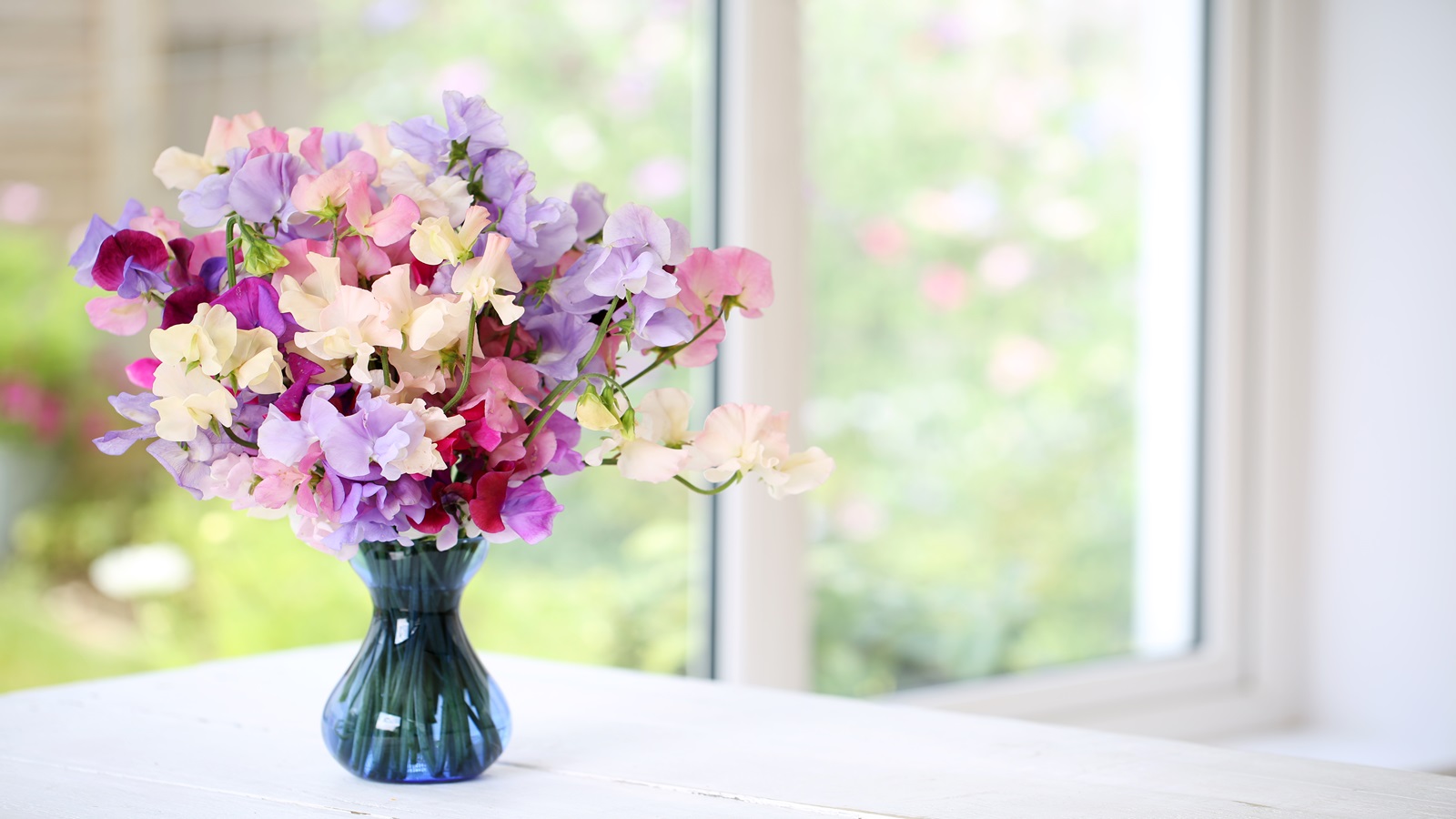
- The different types of sweet pea
- Lathyrus odoratus 'Jilly'
- Lathyrus odoratus ‘Matucana'
- Lathyrus odaratus Mammoth Rose Pink Ball
- Lathyrus odoratus 'Blue Shift'
- Lathyrus odoratus 'Spring Sunshine Lilac'
- Lathyrus odoratus 'King Size Navy Blue'
- Lathyrus odoratus 'Fire and Ice'
- Lathyrus odoratus 'Blue Celeste'
- Lathyrus odoratus 'Wiltshire Ripple'

Sweet peas are amongst the most adored garden blooms. Floriferous, gloriously fragrant and available in a dazzling array of colors from softest cream to vibrant violet they never cease to captivate. An essential part of any English style or cottage garden, these climbing plants can scramble up trees, over fences or they can be carefully trained up obelisks to bring height, impact and romantic charm to the garden throughout the summer months.
Soaring up to 8 feet tall (2.4m), these impressive vines are definitely grown for their attention seeking blooms rather than their blue-grey stems and foliage.
One of the easiest flowers to grow from seed, annual sweet peas are hugely satisfying to grow, rewarding with a wealth of showy flowers emerging from the tiniest round seed, all within a matter of weeks. Sun loving, they require fertile soil and like their long roots to remain moist, but not waterlogged, if they are to produce endless flowers.
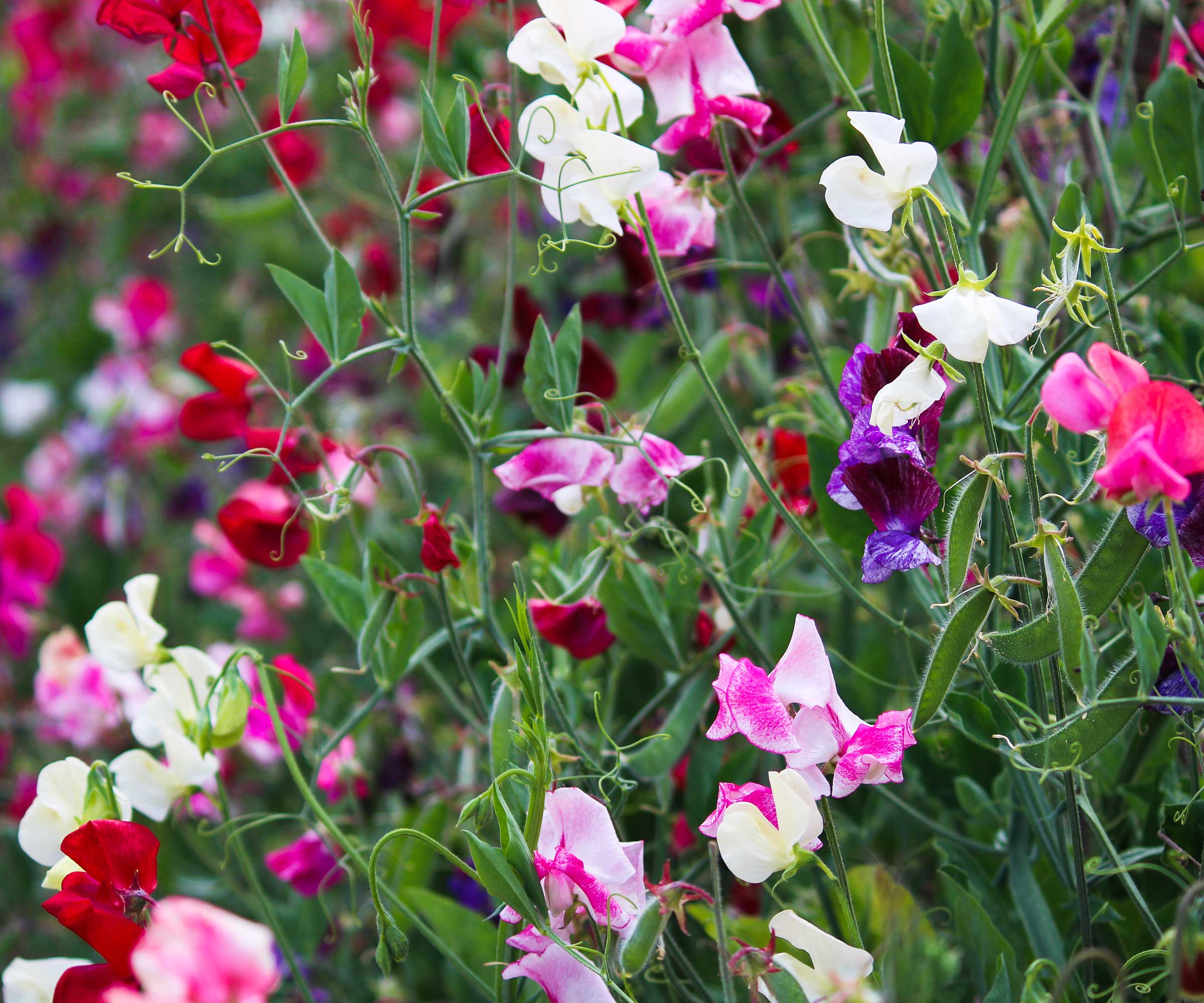
9 irresistible sweet pea varieties to grow
Discover which annual sweet peas are the most rewarding to grow. From the highly perfumed old fashioned types to the largest modern blooms designed to be cut and admired in a vase here is our expert edit of must-grow varieties.
The different types of sweet pea
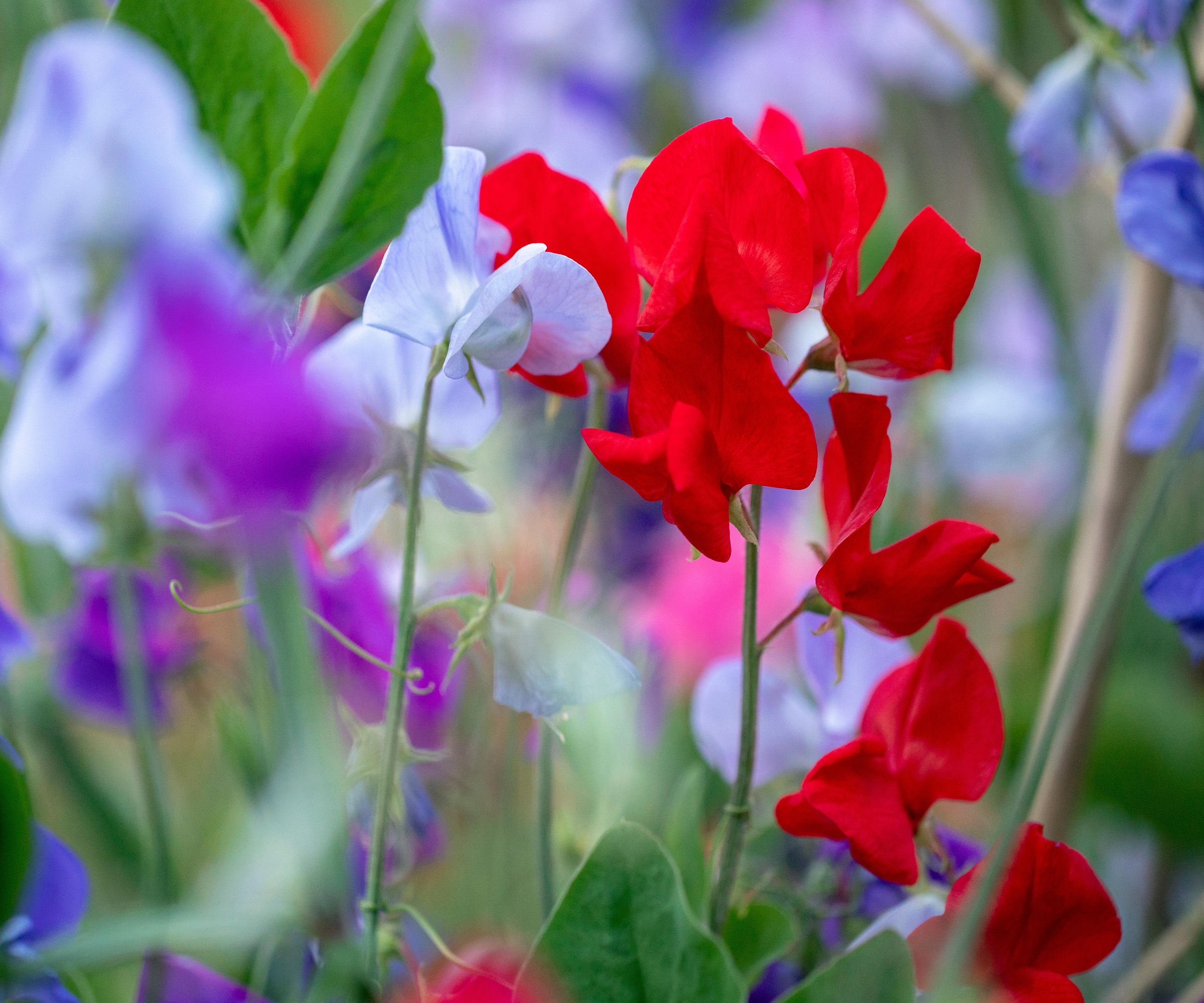
There are endless varieties of the annual sweet pea Lathyrus odoratus to choose from and these are constantly being added too, thanks to avid breeders and the plant's willingness to mutate.
The known varieties are split into three different classifications: Old Fashioned varieties with smaller, non-frilled flowers; Spencer types which bear large, ornate blooms with frilly petals and Modern varieties which have been bred to produce large, simplified flowers on long straight stems, perfect for cutting.
Perennial or everlasting sweet pea Lathyrus latifolius reshoots every year, producing a mass of small white or rose pink, unscented flowers. Ideal for trailing over fences and trellis, it has a scrambling habit and there are around 20 varieties to choose from.
Lathyrus odoratus 'Jilly'
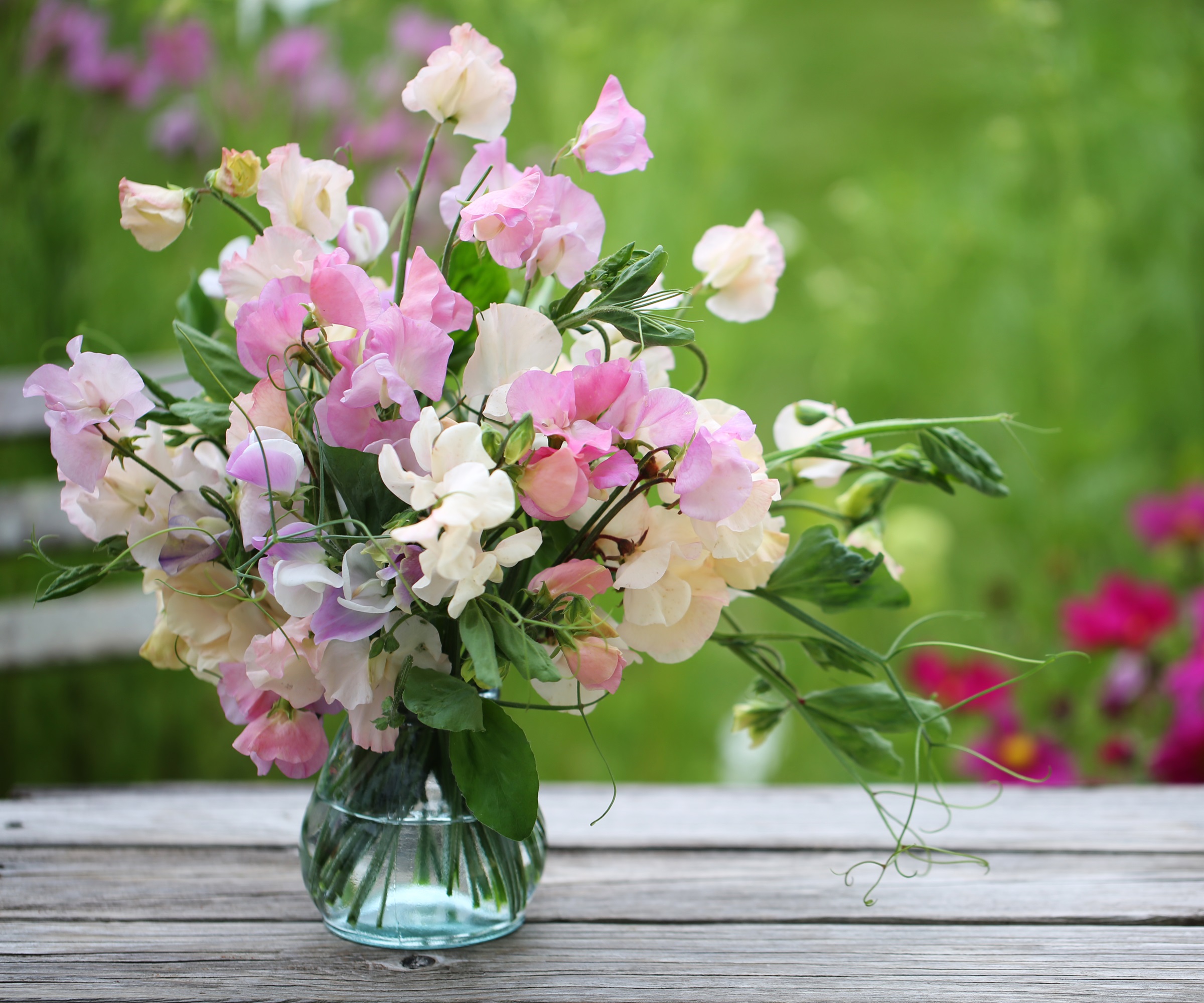
Lathyrus odoratus ‘Jilly’ with its generous wavy soft cream petals and yellow buds is a beautiful, scented sweet pea. Introduced in 1988 by Unwins, it is still regarded as one of the best, pale toned varieties to grow.
'Spencer sweet peas are known for their very long stems and large fragrant blossoms,' explains experienced sweet pea grower Glenys Johnson. 'The Spencer refers to the British Earl of Spencer and his gardener who first propagated these different sweet peas with large frilly-edged flowers.'
The main trick to growing sweet peas successfully is early planting. 'In Northern California where I live I start most of my sweet pea seeds in the fall,' continues Glenys. 'In colder climates where snow stays on the ground early starting of the seeds might be in January-March. Sweet peas are frost tolerant and hardy. They like it sunny and cold.' She also adds, 'Because early planting is key to growing sweet peas one of my favorite times in growing them is mid-winter watching the hopeful sprouting of my sweet pea.'
Lathyrus odoratus ‘Matucana'
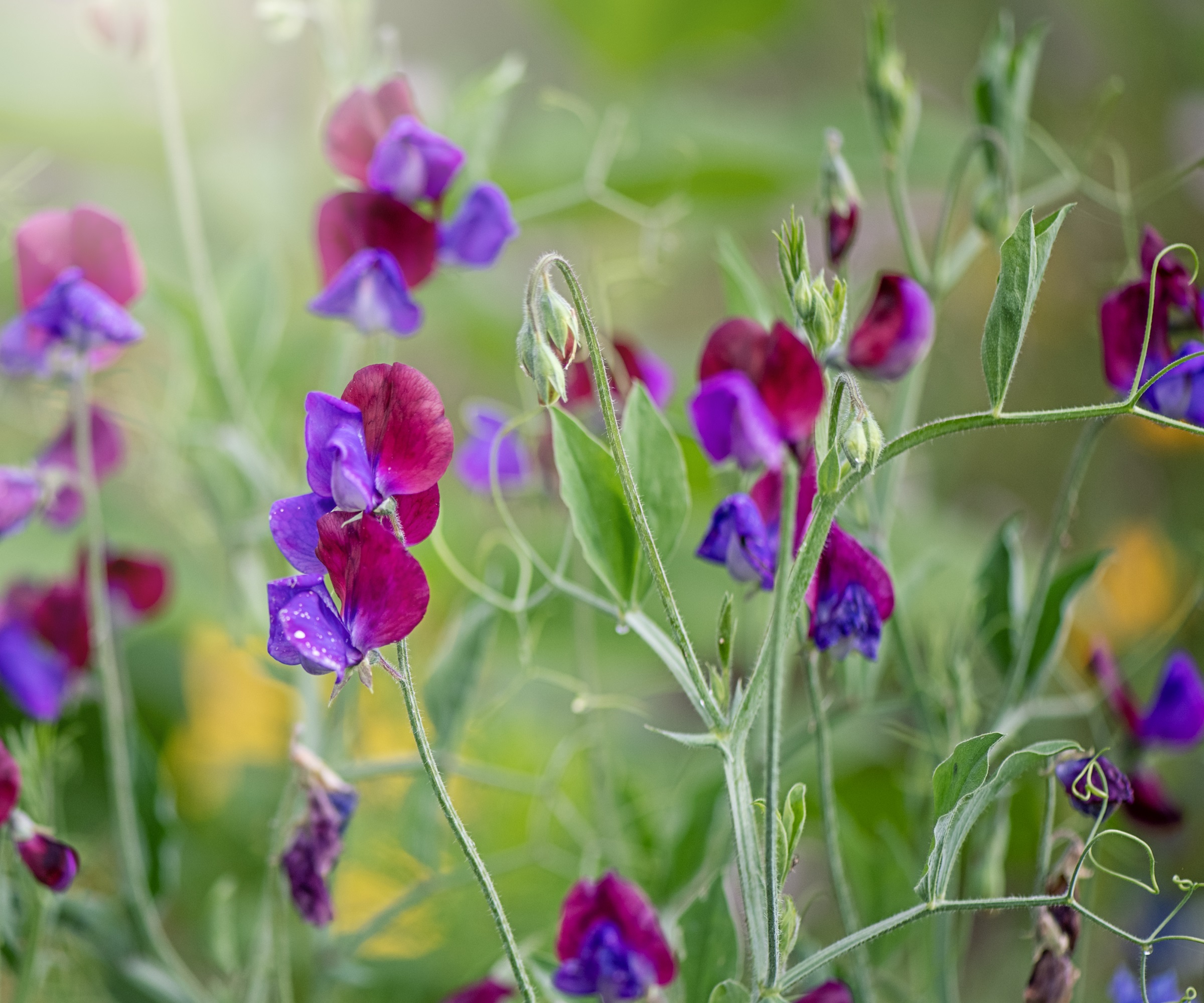
Perhaps the sweet pea with the strongest fragrance, ‘Matucana' is an old-fashioned variety that dates back to 1699. With small but dazzling violet and crimson petals, it produces around four blooms per 6ft 5" (2m) stem.
Flowering continuously from early summer through to fall, they are hugely valuable to pollinators. Although sweet peas can suffer from mildew and other common problems, this variety is known for being more drought tolerant than others. Young sweet pea seedlings can prove irresistible to some small critters so it's worth learning how to stop mice from eating them.
Lathyrus odaratus Mammoth Rose Pink Ball
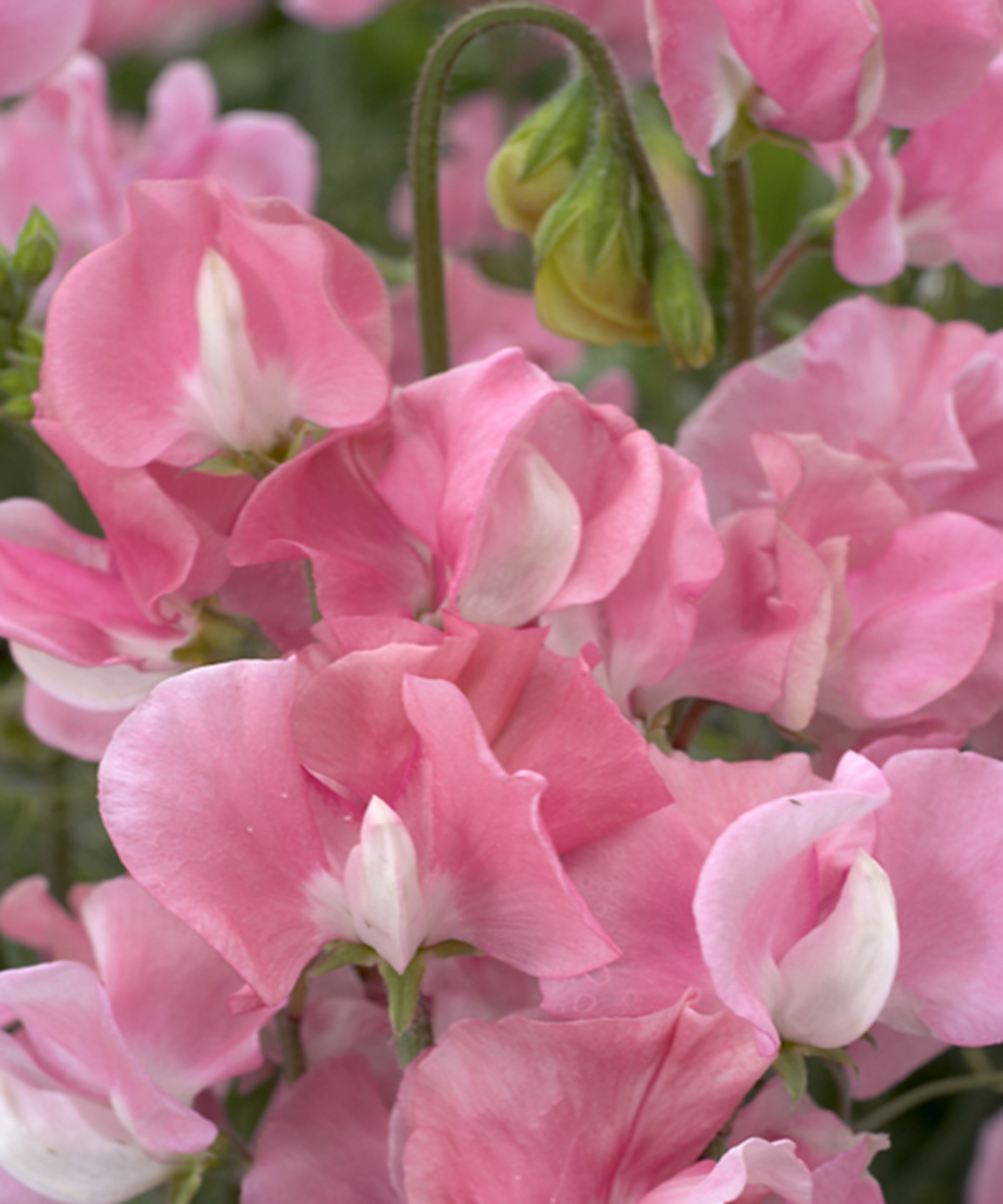
A beautifully clear pink, large flowered sweet pea perfect for cutting. Reaching heights of up to 6ft 5" (2m), this showy annual prefers a sunny spot in rich, well-drained soil. The long straight stems and generous blooms make it perfect for cutting and displaying indoors or in hand-tied bunch.
Encourage strong, bushy plants by pinching out each seedling’s growth tip after three or four pairs of leaves have formed. This will focus the plant’s energy into developing multiple, strong side stems and, ultimately, more blooms. Find Lathyrus odoratus Mammoth Rose Pink seeds at Burpee and Ball Seed Company.
Lathyrus odoratus 'Blue Shift'
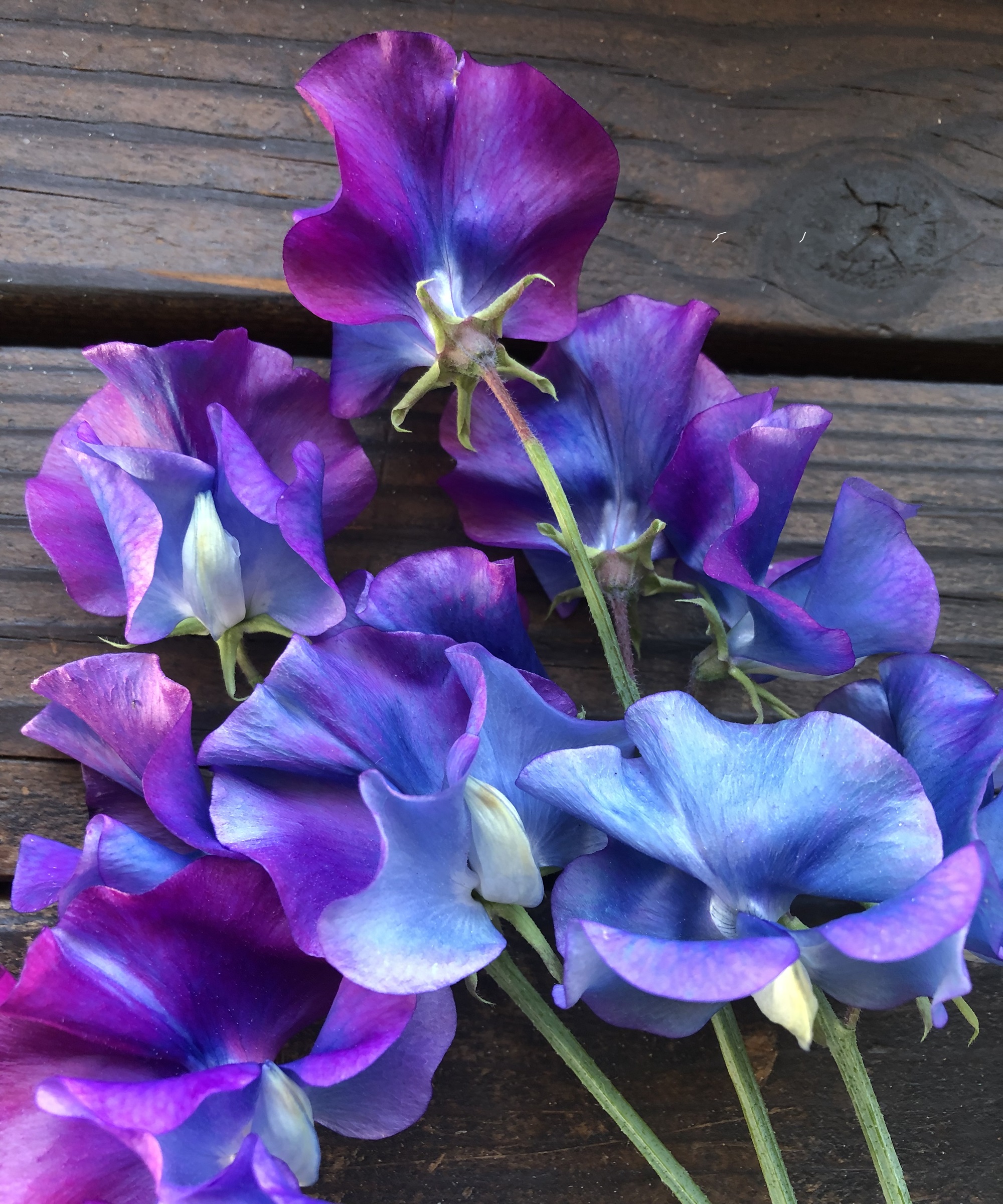
Ask sweet pea growers for their favorite bloom and you are bound to hear the name ‘Blue Shift’. Once you’ve actually seen the flower in all it’s glory, it’s not hard to see why it is quite so mesmerising. Sweet pea grower and horticulturalist Georgina says, 'What sets this variety apart is its extraordinary ability to shift colors as the flowers mature - from delicate pinks and purples to mesmerizing blues and aquamarines. It’s like watching a living watercolor painting unfold right in front of you.'
Sweet pea grower Glenys Johnson is also a devotee saying, 'Even after cutting, Blue Shift continues to transform in the vase offering a spectacular color display. Very unique!'
Georgina encourages everyone to give these seeds a try, and adds, 'To get the most out of 'Blue Shift,' ensure it has access to full sun and well-drained soil. Sweet peas are heavy feeders, so regular feeding with a balanced fertilizer will keep them blooming beautifully. Also, remove spent flowers regularly to encourage the next wave of color. And make sure that they have plenty of water.'
Find Lathyrus odoratus 'Blue Shift' seeds at Enchanting Sweet Peas.com and Sweet Pea Gardens.

A cut flower grower/seller of sweet peas for many years, in 1997, Glenys Johnson started her Enchanting Sweet Peas flower seed company in Sebastopol, CA. She grows gorgeous sweet pea flowers and sells seeds for them and supplies online. Glenys is available to share her sweet pea growing expertise and her love of these enchanting flowers at garden club presentations as well as answering more specific sweet pea planting concerns by email.

Georgina is the founder of Sweet Pea Gardens and a passionate horticulturist with over 10 years of experience specializing in sweet pea cultivation. She is dedicated to helping gardeners grow beautiful, sustainable gardens filled with vibrant, fragrant flowers.
Lathyrus odoratus 'Spring Sunshine Lilac'
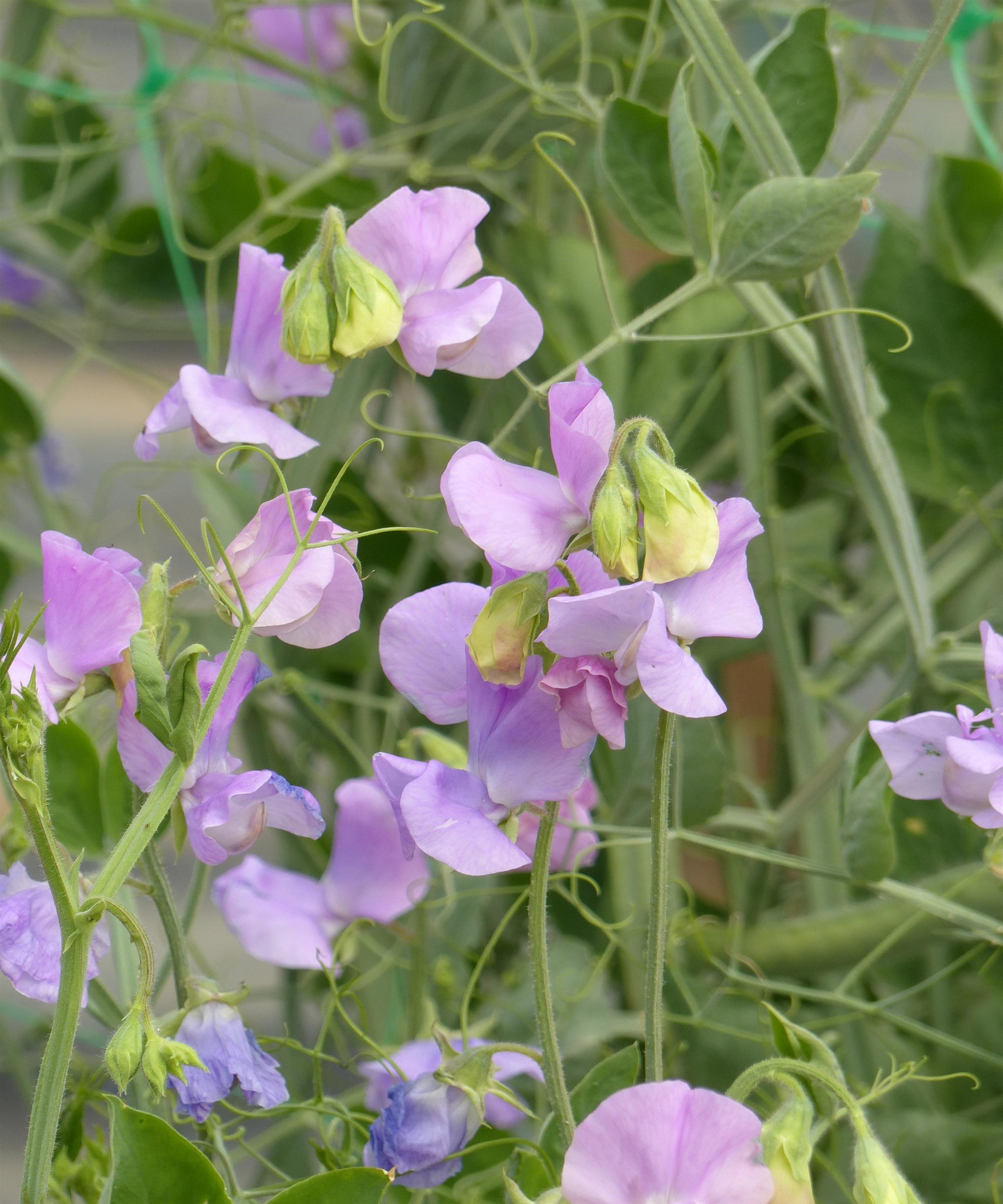
Sun loving and able to thrive in warm dry climates, this relatively new variety of sweet pea bears large softly waved petals in a delicate shade of lilac.
With stems reaching up to 6ft 5’’(2m) tall, this vigorous climber needs a strong support such as a sturdy trellis or tripod of hazel ‘pea’ sticks.
As with all sweet peas, this variety fixes nitrogen from the air into the soil. Encourage these plants to produce plentiful blooms by thoroughly preparing the soil, adding in well rotted manure, and feeding young plants with a dilute liquid feed that is high in potash and phosphate. Ensure that roots don't dry out. Water ground planted sweet peas every three or four days, and container grown plants every day or two.
Find Lathyrus odoratus 'Spring Sunshine Lilac' seeds available at Ball Seed Companyand Muller Seeds.
Lathyrus odoratus 'King Size Navy Blue'
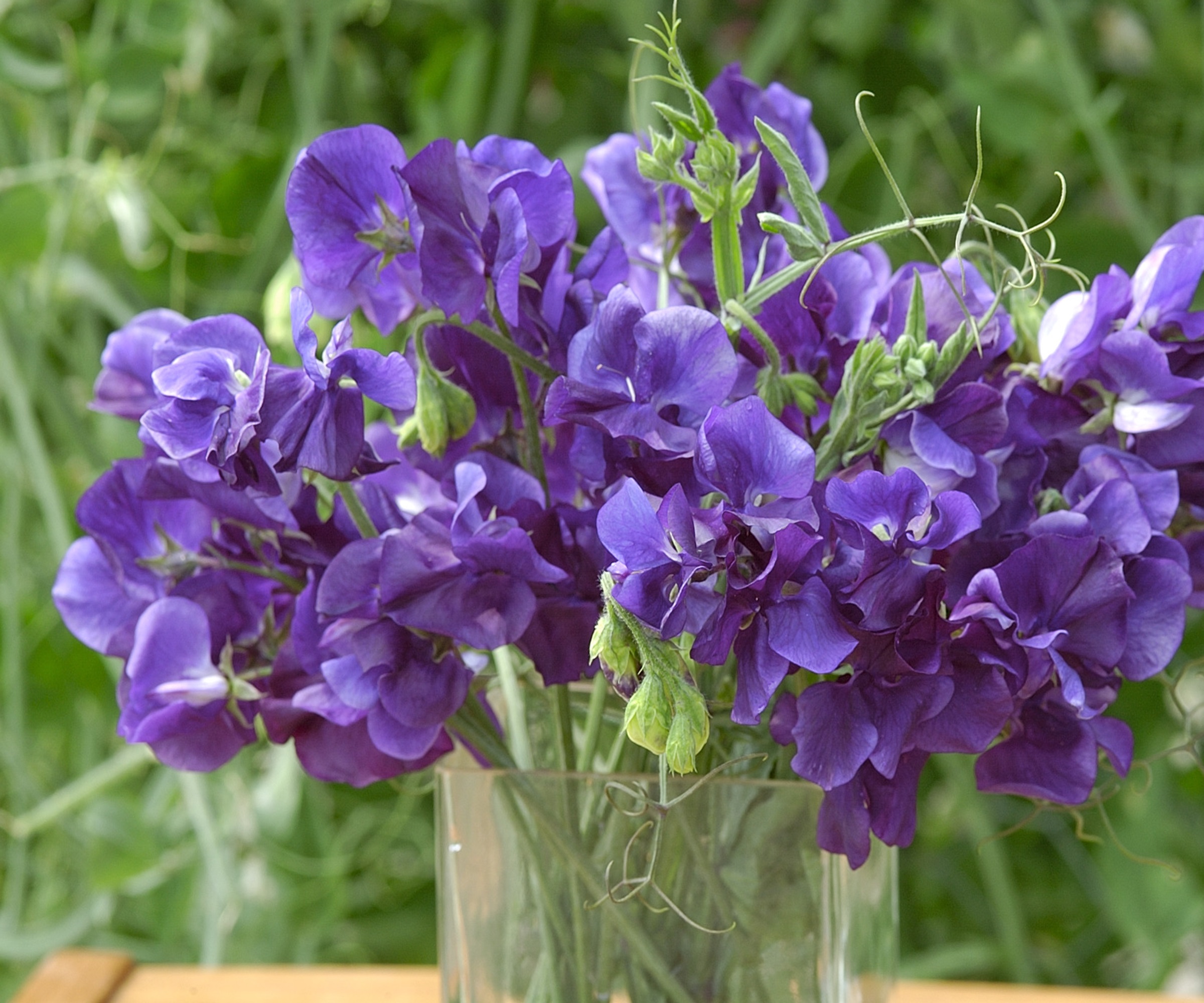
Simply stunning, if you are after a bold sweet pea that will turn heads, this variety is for you. Big, blowsy with deepest blue - almost inky black - petals, this flower also has a glorious perfume, so you only need a few stems in a small vase to fragrance a room.
Bred to produce five frilled flowers on each long slender stem it makes a real impression when paired with paler sweet pea varieties and other cottage garden favorites. Make cut stems last longer in the vase by cutting them at angle, using sharp clean snips. Once back indoors, submerge the cut stems back in fresh, cold water and recut the base – again at an angle – ½ inch (2.5cm) above to prevent air bubbles forming.

Operations Manager at Holland Group, managing the customer service department and purchasing. Katie has been in the green industry since 2005 in the Greater Milwaukee area, earning her degree in Horticulture in 2008. She has been able to share her love for plants working in multiple garden centers, in sales positions and most recently in an online retail platform at Holland Group.
Lathyrus odoratus 'Fire and Ice'
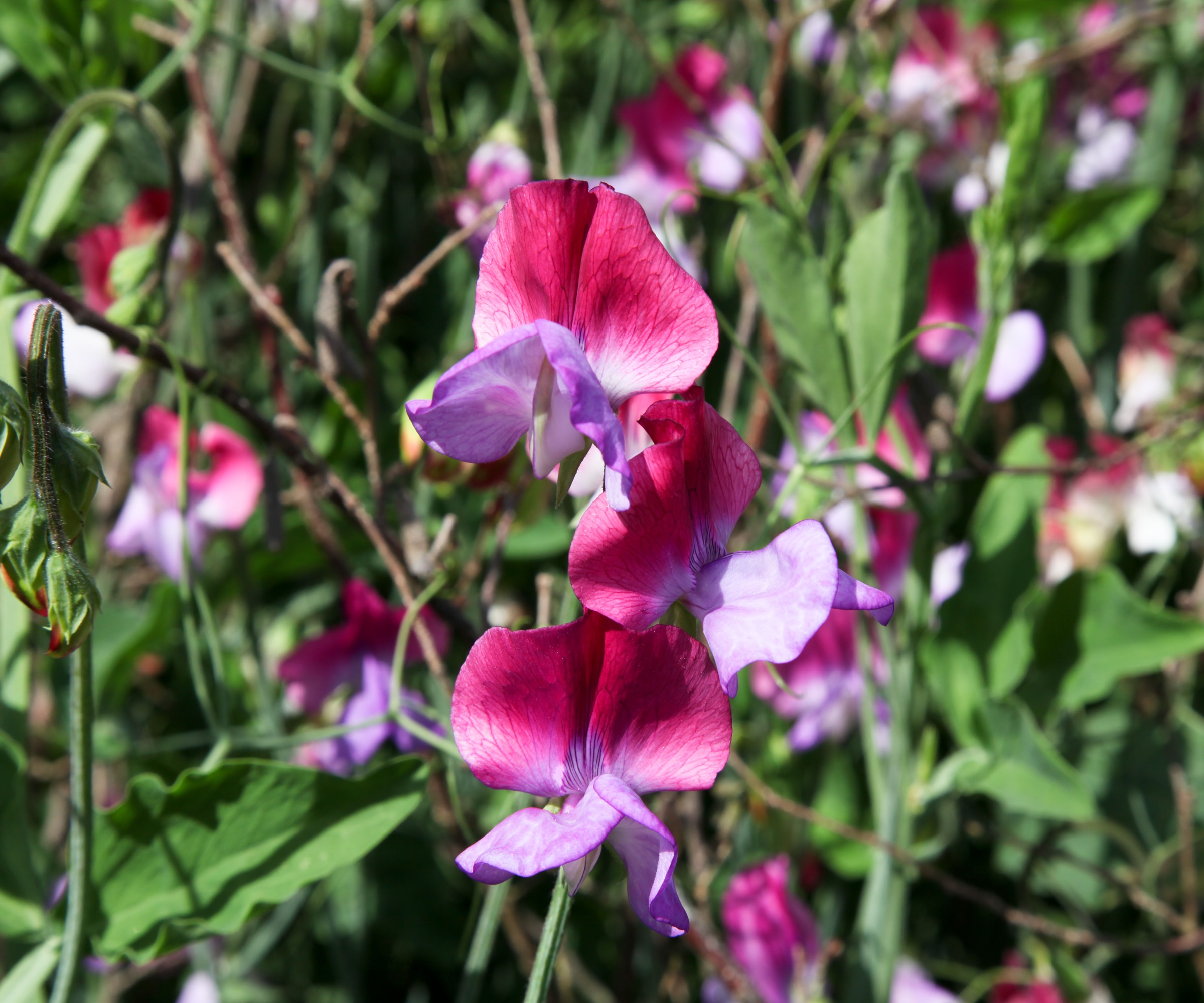
With their delicate soft pink petals tinted with violet, this large flowering sweet pea is a modern blend of large flowers on long straight stems. Perfect for cutting and arranging in a vase, it’s a prolific flowerer, just be sure to snip of spent blooms regularly to ensure the plant’s energy goes into bud rather than seed production.
Loved by garden pollinators, it also has many fans across the flower farmers, florists and sweet pea fanatics. 'This is a modern grandiflora variety that produce masses of dark pink and purple blooms. Fire and Ice is one of my favorite varieties for the showy, contrasting flower blooms that are slightly ruffled,' says plant expert Katie Sunderlage. 'This is one of the most fragrant varieties but do avoid positioning in hot afternoon sun for best results.'
Lathyrus odoratus 'Blue Celeste'
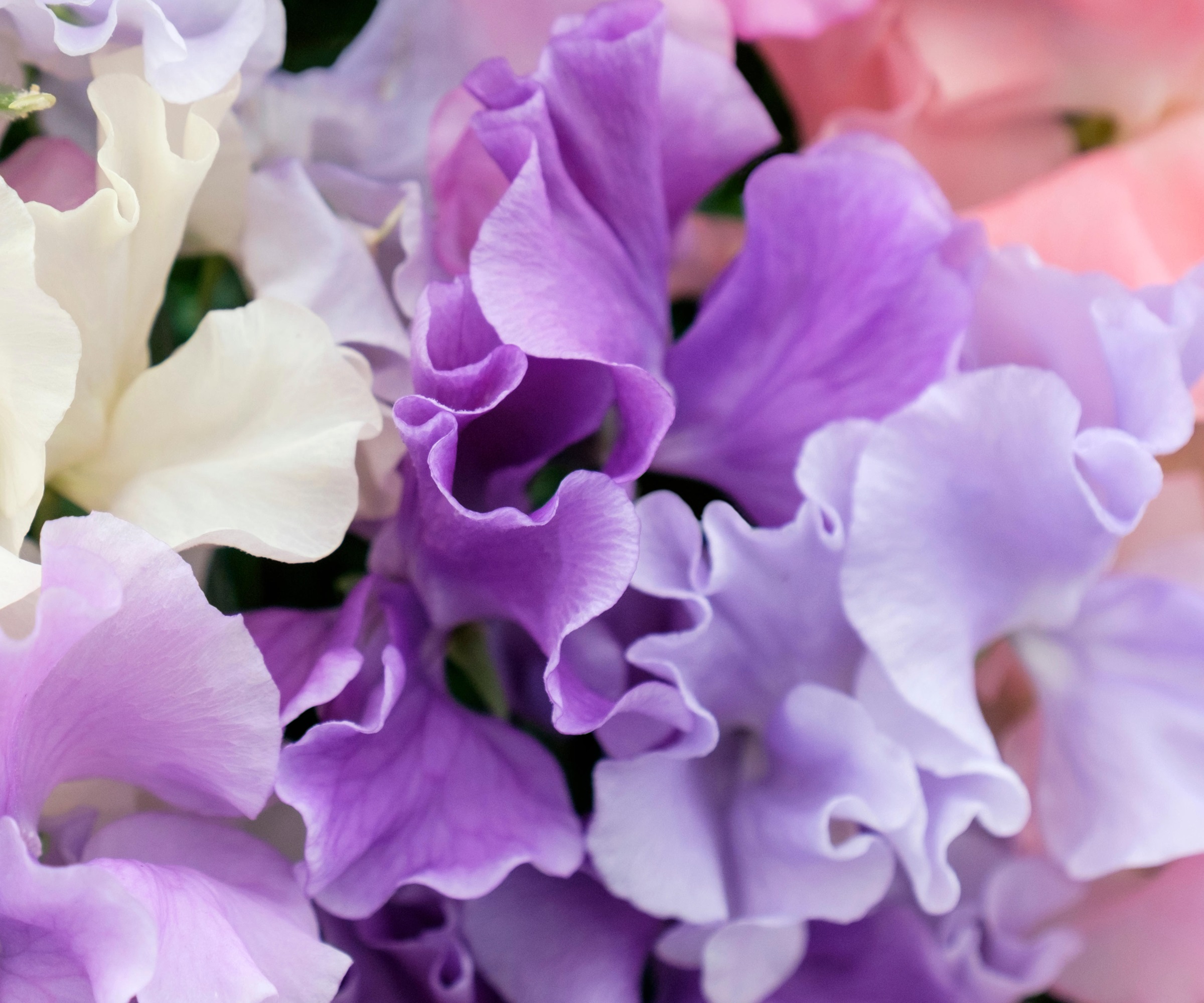
When most gardeners think about sweet peas, chances are they are picturing the Spencer varieties. Ruffled, fragrant and deliciously flamboyant they epitomise the fleeting beauty and charm of summery cottage gardens.
'My favorite sweet pea variety are the tall vining ‘Spencer’ varieties. They have especially pretty, large, ruffled blooms in almost every color,' says Glenys. 'If you’re after fragrance check the seed packets, some are very fragrant, and some only mildly so. Of the Spencer’s’, Blue Celeste with their pastel lavender color and strong, delightful fragrance are my favorite.'
Get set for a spectacular display of sweet peas by either investing in plant nursery grown seedlings or try germinating your own. Learning how to sow and raise sweet pea seeds is fairly straightforward, and these plants take around three weeks to germinate, but there is a debate over how to best prepare the seeds. Peggy Anne Montgomery says, 'While some people disagree about this I soak my seeds in water overnight.' Other experts suggest nicking the hard seed case with a sharp knife, while others simply sow the round seeds direct from the packet.
Peggy Anne also offers this advice for getting the most from these gorgeous plants. 'Plant in early spring before the first frost in rich soil. Pick them when two flowers are open for the longest vase time. These tall vining varieties will grow up nearly anything. Sweet peas are poisonous use caution around children and pets.'

Peggy Anne Montgomery is a horticultural professional with more than 30 years of US and international experience in garden marketing and communications. An account executive for the Garden Media Group, she currently represents Dutch Royal Anthos, a trade organization for Dutch bulb growers and exporters in the US and Canada.
Lathyrus odoratus 'Wiltshire Ripple'
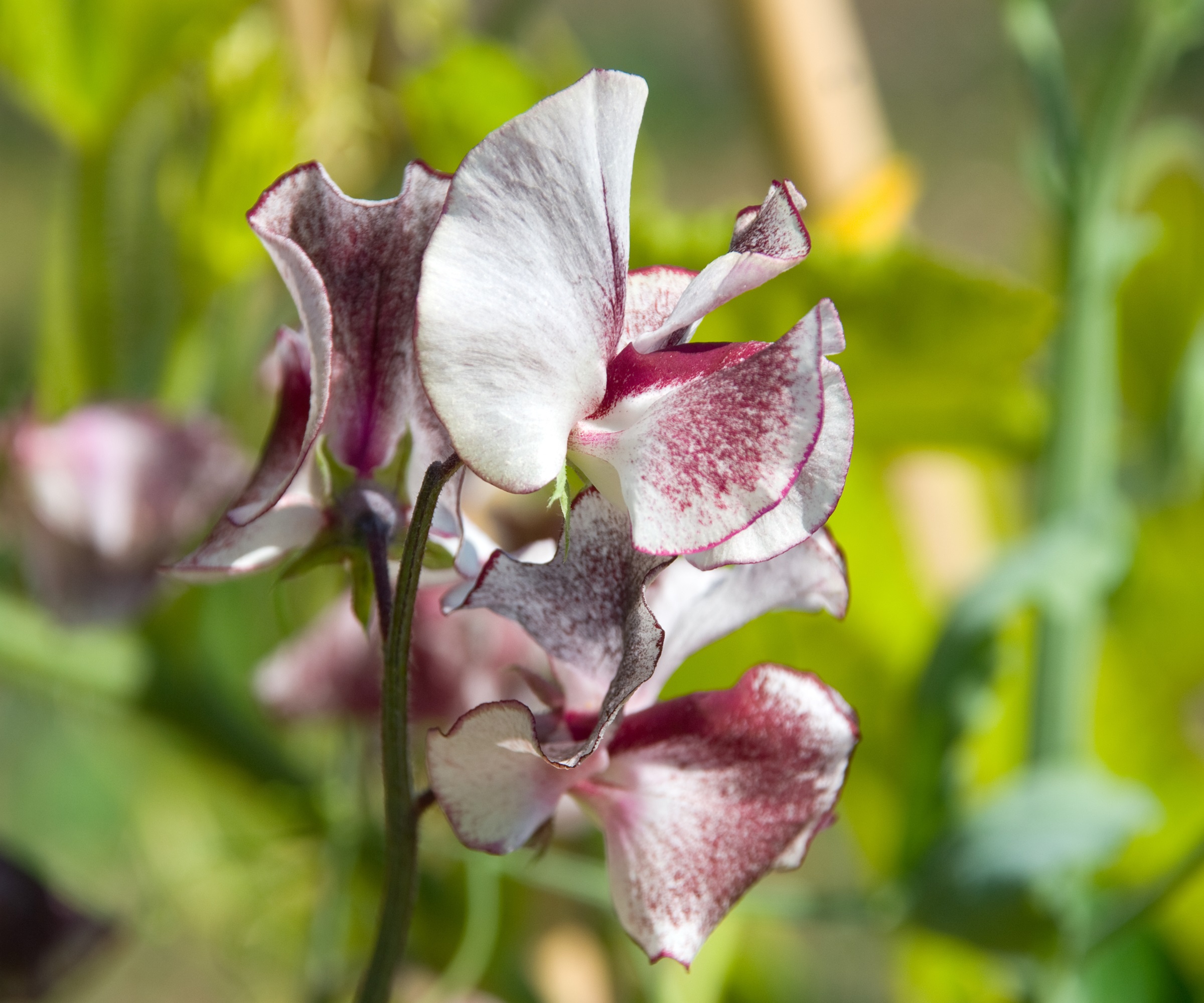
A Spencer type sweet pea, these large wavy flowers have the most breathtakingly delicate markings and fine outline - known as picotee - in deep blackcurrant and claret set against soft ivory. With a painterly appearance the blooms are loved by pollinators, attracted in part by the heady perfume. They also look stunning trained over arches, walls and trellis and will do wonders surrounding a veggie patch, enticing bees and other helpful insects to visit.
Reaching heights of around 5ft 9’’(180cm), seeds take just 10-14 days to germinate and can be planted in rootrainers – such as this Deep Rootrainer kit from Walmart – to encourage strong, deep roots to form.
After reading this edit of which sweet pea varieties to grow you will surely be inspired to fill your summer garden with these delightful and colorful blooms. To add to your growing list, why not discover which are the easiest flowers to grow from seed and learn how to germinate seeds successfully in our expert guides.
Sign up to the Homes & Gardens newsletter
Design expertise in your inbox – from inspiring decorating ideas and beautiful celebrity homes to practical gardening advice and shopping round-ups.

Journalist Jill Morgan has spent over 20 years writing and editing gardening, interior and property features. Titles she has worked on include The English Home, House Beautiful, Ideal Home, Houzz and Modern Gardens and she writes regularly for H&G as a Contributing Editor. Whilst she is a dab hand at renovation projects and DIY, she is happiest when out digging in the garden or planning a new border.
-
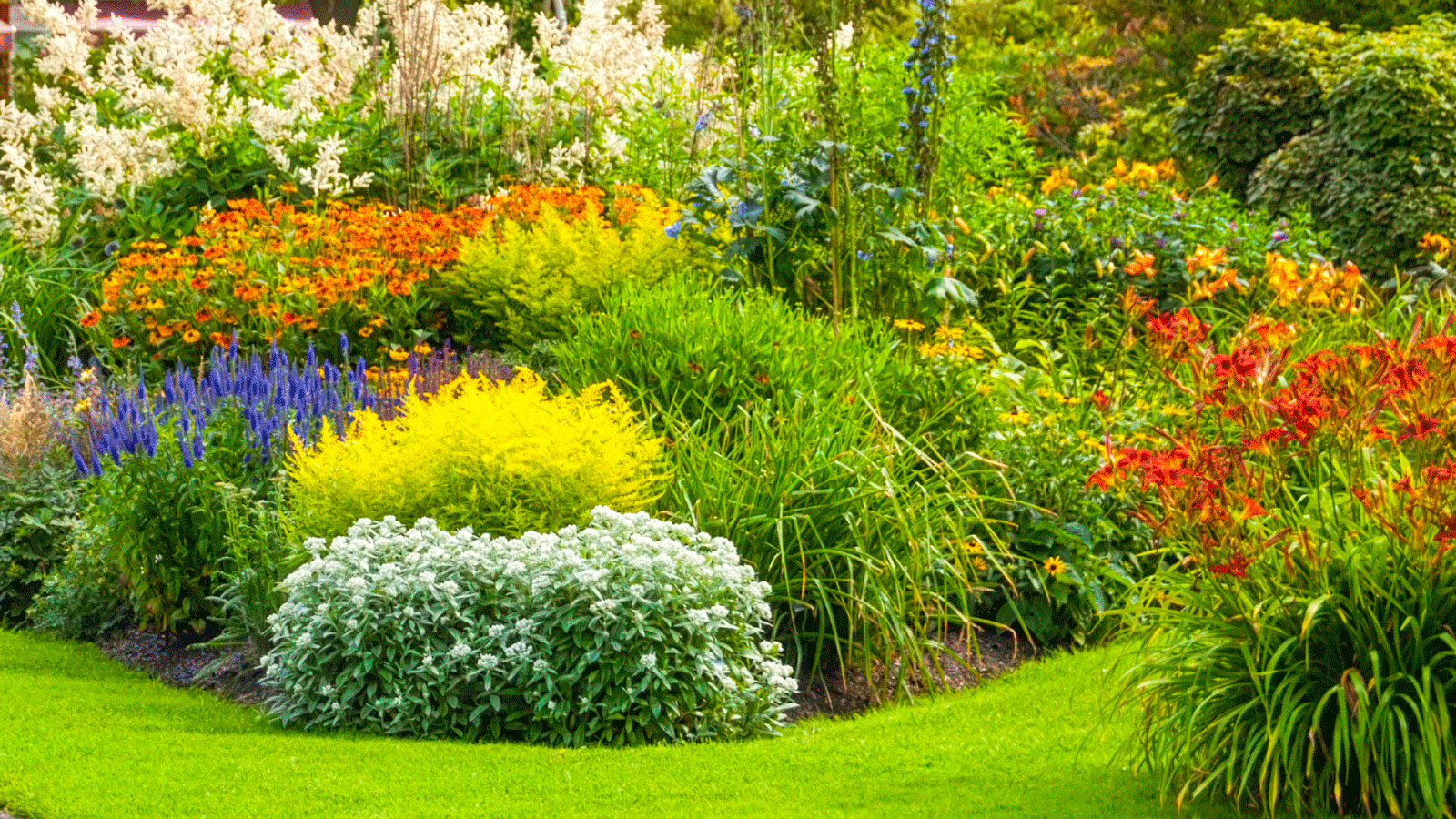 What is an island bed? This clever garden design trick can add privacy and drama to any backyard
What is an island bed? This clever garden design trick can add privacy and drama to any backyardCreate a long-lasting, low-maintenance and visually appealing island bed that also serves a purpose in the garden
By Sarah Wilson
-
 Kourtney Kardashian's cloud-like chair taps into 2025's most interesting furniture trend – it has the unique ability to improve spatial flow in any room
Kourtney Kardashian's cloud-like chair taps into 2025's most interesting furniture trend – it has the unique ability to improve spatial flow in any roomAn accent chair highlights the beauty of the natural world in the socialite's living room – experts explain why it's trending and how to recreate the look
By Sophie Edwards